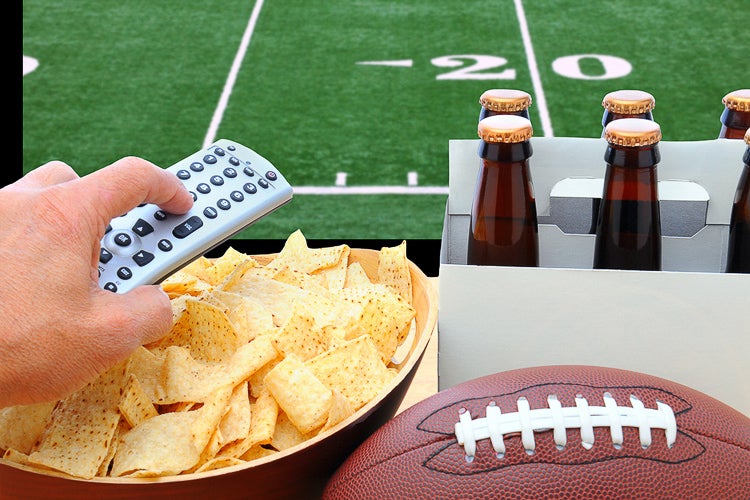
New Stanford research suggests that Super Bowl ads are mostly effective but not always.
The Super Bowl is the most watched American TV spectacle, and companies annually put forth their biggest efforts to make stunning commercials aimed at creating impressions and buzz.
New Stanford research suggests that these Super Bowl ads are mostly effective – but not always. They do not drive new sales when two brands of the same type – soda, for example – are both advertising during the football game.
Still, Super Bowl ads can generate significant increases in beer and soda sales revenue and volume per household, said Wesley Hartmann, an associate professor of marketing at Stanford Graduate School of Business, who co-wrote the study with Daniel Klapper of Humboldt University in Berlin.
For example, the researchers estimated that Budweiser earns an extra $96 million from their ads, receiving a return on their advertising investment of 172 percent. Anheuser-Busch – the producer of Budweiser beer – has held exclusive rights to national beer commercials in the Super Bowl for more than 20 years.
But, Hartmann added, “When two major soda brands both advertise, they receive no profit gain to offset their advertising investments.”
Boost to big brands
Super Bowl TV ratings show that over 40 percent of American households tune in to watch the NFL championship game. Four of the five most watched TV programs in U.S. history were Super Bowls. The competition to get those ad spots reserved is considerable – the spots, now costing up to $4.5 million each, are often reserved months in advance with time-consuming and expensive creative productions to follow right up until game time.
To shed light on this topic, Hartmann and his colleague focused their research on three large and well-known beer and soda brands (Budweiser, Coca-Cola and Pepsi) that typically advertise during the Super Bowl. Data was collected from 55 media markets, six years of Super Bowls and sales data from Nielsen. The idea was to determine whether increased sales were the result of exposure to particular TV commercials for these brands.
They found that Super Bowl ads can spur large increases in revenue and volume per household, but when two major competing brands advertise, most of the gains are eroded.
In the broadest sense, the researchers wrote, Super Bowl ads “build an association between the brand and viewership of sports.” However, two competing brands do not benefit from this same association at the same time.
“Consumption of beer, snacks and other items while watching sports is easily observed in society, but this is, to our knowledge, the first evidence illustrating that advertising plays a role in this relationship” through its link to a particular brand, Hartmann and his colleague wrote.
In terms of effectiveness, Super Bowl advertising for an established brand is best when it builds on that association between the well-known product and sports in general, according to Hartmann.
To advertise or not to advertise
The study did not look at what would happen if the big brands suddenly stopped their advertising. Hartmann said it is unknown what those results would be – or what would happen if a new competitor to the big brands already advertising launched Super Bowl commercials.
He acknowledges that the research cannot account for all the variations in a given market, or for the scenario in which existing advertisers pulled out of the Super Bowl altogether. And it is unclear how the findings for competing brands can be extrapolated to different TV broadcasts or programming.
The question facing big brands is that if they opt out of Super Bowl advertising, they might concede its benefits to a primary competitor, Hartmann said.
For example, Budweiser’s sales revenue in the short run after the Super Bowl is about 15.75 percent higher per household than for their competitors, according to the research. “Budweiser’s long-standing association with the Super Bowl is paying off during this peak sales period,” wrote the researchers.
Meanwhile, Pepsi and Coca-Cola – clear competitors – both have advertised annually in the Super Bowl. Hartmann said that if both decided not to run Super Bowl ads, it could open up airtime to less-established rivals. And it is quite possible that such a competitor could make considerable gains in consumer awareness of their product with a memorable ad, he noted.
Such an example was Apple in 1984 when its Super Bowl ad – deemed the greatest of all time – arguably changed the fortunes of that company forever.
Hartmann said the effectiveness of most TV advertising is hard to gauge. But the Super Bowl allows researchers to compare one media and sales market to another. For example, in 2011, when the Green Bay Packers returned to the Super Bowl after a 13-year absence, TV ratings for that game jumped 14 points in their home market of Milwaukee.
“That exposed more Wisconsinites to perennial advertisers such that we should expect effective ads to generate a corresponding increase in market share for their brands,” Hartmann said.
Media Contacts
Wesley Hartmann, Graduate School of Business: (650) 725-2311, hartmann_wesley@gsb.stanford.edu
Helen Chang, Graduate School of Business: (650) 723-3358, chang_helen@gsb.stanford.edu
Clifton B. Parker, Stanford News Service: (650) 725-0224, cbparker@stanford.edu